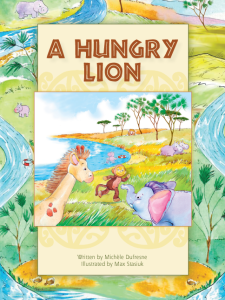 A Hungry Lion: Lion is hungry and has his eye on a baby hippo. Little Monkey makes sure Lion does not get the baby hippo in this colorfully illustrated book.
A Hungry Lion: Lion is hungry and has his eye on a baby hippo. Little Monkey makes sure Lion does not get the baby hippo in this colorfully illustrated book.
Level F
Follow Who Can Read? on Twitter.
 A Hungry Lion: Lion is hungry and has his eye on a baby hippo. Little Monkey makes sure Lion does not get the baby hippo in this colorfully illustrated book.
A Hungry Lion: Lion is hungry and has his eye on a baby hippo. Little Monkey makes sure Lion does not get the baby hippo in this colorfully illustrated book.
Level F
Follow Who Can Read? on Twitter.
 A Birthday Present for Spaceboy: Spaceboy doesn’t like his new Spaceship but everyone else does.
A Birthday Present for Spaceboy: Spaceboy doesn’t like his new Spaceship but everyone else does.
Level E
Follow Who Can Read? on Twitter.
Do you remember the first time you read the story of The Three Little Pigs? How about the first time someone told you the story of Goldilocks and the Three Bears? It seems like you must have known these traditional tales forever, but somewhere along the way they were read to you or you learned to read them yourself. The tradition of reading folk tales, fairy tales, and fables continues at home and in schools for good reason. Here are the top five reasons why you should be reading traditional tales with your child.
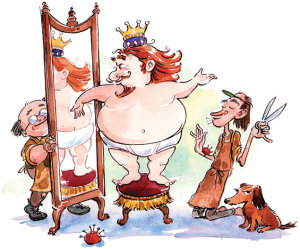
The Emperor’s New Clothes, Retold by Michele Dufresne and Illustrated by Michael Chesworth
1. Traditional tales are universal. At some point or another, your child will come across a classic folk tale like The Emperor’s New Clothes or The Gingerbread Boy. The earlier you introduce them the more confident your child will be with the plot and concepts as he or she moves up the grades.
2. Traditional tales often reflect the values and beliefs of diverse cultures, which promotes understanding that the world is a bigger place than one’s own town, group of friends, school, or neighborhood.
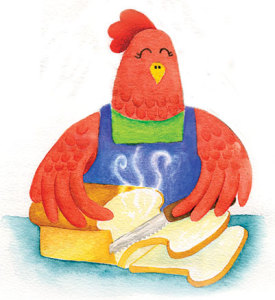
The Little Red Hen – Retold by Rose Lewis and illustrated by Ann Caranci
3. Traditional tales can teach an important lesson. How old were you when you first heard the tale of The Little Red Hen? As you grew older did your understanding of the deeper meaning of it grow as well? The sooner kids hear these morals and lessons, the better they can explore their deeper meanings as they grow into adult readers.
4. Reading traditional tales enhances your child’s own storytelling skills. Many tales start with “Once upon a time…” which opens up a world of stories to the listener.
5. Traditional tales are a part of the “oral tradition,” an important concept for your child to get to know. Oral tradition spans poems, riddles, songs, lullabies, and even jokes.
As with all of our tips, we always recommend reading, reading, and more reading with your child as early as you can in his or her life. Our other recommendation is to read lots of different kinds of books. The more familiar your child can get with the fact that there are all kinds of books out there, the more comfortable he or she will be when it comes time to read on his or her own.
Download our app in the App Store:
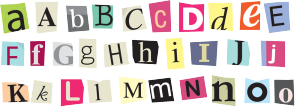 Learning to hear sounds in words will be very helpful when your child begins to read. The more awareness your child has of the connection between the alphabet and the sounds each letter makes, the more prepared he or she will be when starting school. Here are fun letter sound activities to play with your child:
Learning to hear sounds in words will be very helpful when your child begins to read. The more awareness your child has of the connection between the alphabet and the sounds each letter makes, the more prepared he or she will be when starting school. Here are fun letter sound activities to play with your child:
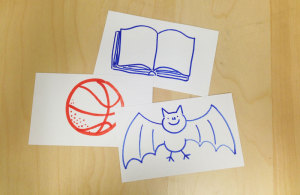 3. Cut out pictures from a magazine that start with the same sound or draw them on index cards. For example: ball, book, bat (see samples on the left). Use a set of picture cards to have your child sort the pictures by initial sounds. Pioneer Valley Books sells picture cards here and you can also get them at any bookstore or by doing a search on Amazon.
3. Cut out pictures from a magazine that start with the same sound or draw them on index cards. For example: ball, book, bat (see samples on the left). Use a set of picture cards to have your child sort the pictures by initial sounds. Pioneer Valley Books sells picture cards here and you can also get them at any bookstore or by doing a search on Amazon. No matter what you do, remember that, as the parent, you are your child’s greatest influence on his or her reading success. Take time to read and practice words and have fun in the process!
 More books featuring our marquee characters, Bella and Rosie, will soon be available on our iPad app.
More books featuring our marquee characters, Bella and Rosie, will soon be available on our iPad app.
Coming this winter, we will have many new books featuring all of your favorite Pioneer Valley characters. That includes our most popular characters, the adorable Bella and Rosie, two white Bichon Frises!
For those who don’t know Bella and Rosie, here’s a quick look at this dynamic dog duo.

Seasoned Bella and Rosie fans can tell these two dogs apart! Can you?
Bella’s Birthday is February 15th. She is older than Rosie by just a few months. Bella is prone to getting into mischief, like in the book Bella is a Bad Dog (only available in print). Bella also loves purple. If you are ever having trouble telling them apart, she is usually seen wearing a purple collar. Beginning readers love Bella because she is prone to ducking authority, and getting herself (AND Rosie) into trouble.
Rosie, born May 8th, is Bella’s opposite. She is cautious and worried much of the time. She’s always trying to keep Bella OUT of trouble. She loves the color pink and her favorite phrase is “Oh, dear!” Children love Rosie because she is relatable. Who doesn’t have a friend always trying to get them into shenanigans?
Look out for these Bella and Rosie titles, coming to the iPad in 2015:
| Where is My Hat? | D |
| Bella’s Birthday | C |
| Fun at the Beach | E |
| A Hungry Puppy | D |
And if you haven’t downloaded them yet, here’s a list of Bella and Rosie books that are available in our iPad app (for in-app purchase) already.
| Dinner Time for Bella and Rosie | A |
| Bella’s Busy Day | B |
| Lost in the Woods | E |
| Rosie is Cold | E |
| Puppies for Rosie | G |
You can also follow our Pinterest board called iPad Books Featuring Bella and Rosie.

Nonfiction presents different challenges to beginning readers. Either the topic is so well-known that there are no new concepts, or you are faced with having to help your child learn and understand complex new vocabulary. Children need to learn how to read and understand these new concepts. They will be tested on them as they get to school and move up the grades, so it’s best to have them start early reading nonfiction with your help now.
Here are a few tips for reading nonfiction books with your child:
If you’re interested in trying out nonfiction books available on our ipad app, here’s a quick list of what we offer.
| Insects | A |
| Baby Animals of the Rain Forest | B |
| Vehicles | B |
| Making Pizza | C |
| Kittens | D |
| Porcupines | D |
| Our Senses | E |
| Making Maple Syrup | F |
| Snakes | F |
| Baby Animals of the Forest | G |
| Riding Bicycles | H |

The New York Times recently published an intriguing story questioning whether “e-reading” is story time or just screen time.
The answer, researchers say, is not yet entirely clear. “We know how children learn to read,” said Kyle Snow, the applied research director at the National Association for the Education of Young Children. “But we don’t know how that process will be affected by digital technology.”
Part of the problem is the newness of the devices. Tablets and e-readers have not been in widespread use long enough for the sorts of extended studies that will reveal their effects on learning.
You can read the full article here.
Our app is designed to be as close to the experience of the pages of a print book; we value the relationship of words to images on the page for beginning readers’ acquisition of reading.
We advocate that any book or electronic book reader be used with direct parental or teacher involvement. We believe strongly that sharing the reading experience is the key to building a child’s love of reading.
What do you think? Share your views on our Facebook page.
If your child is just setting out to learn to read, you might need to boost his or her word knowledge. Here are a few things to help you pick the right Level A book* and ways you can use the book with your child:

Here are some other examples of language structures with easy vocabulary: I am running. I like pizza. Mom is cooking. Here is a ball. Look at my ribbon. Dad can see a car.
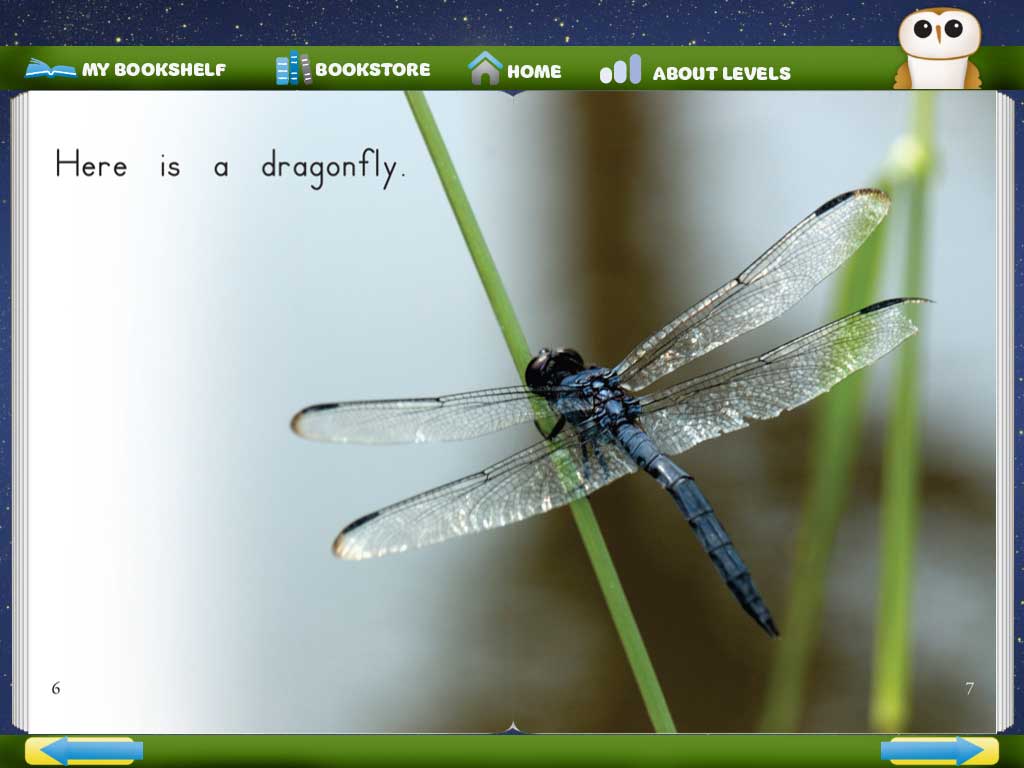
Notice how clearly the picture illustrates the text. High frequency words (Here, is, and a) are used on each page of the book.
Now that you’ve found the right book, sit down with your child:
Increasing your child’s word knowledge is one building block to becoming a reader. Good luck!
Here are the top 5 reasons why the Who Can Read? app will make your child a better reader. The simplicity of the app is deceptive; we kept the interface rather streamlined (not too many bells or whistles) because we believe that the secret sauce of our app is the books themselves.

The characters featured in our books are beloved by students in classrooms around the country and world. Don’t believe us? Ask any Reading Recovery student who Bella and Rosie are and they will likely be able to answer you. That’s not all: we give our characters real-life personalities that students and kids recognize. Perhaps your child will identify with how brave (and at times mischievous) Bella can be or with how shy and cautious Rosie behaves. Even if our characters aren’t the ubiquitous Mickey or Dora or Clifford, they are every bit as likable.
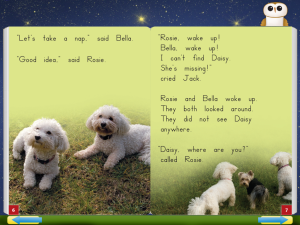 Our authors work hard to make the stories they write appealing to younger audiences. Story plots are easy for kids to understand and relate to.
Our authors work hard to make the stories they write appealing to younger audiences. Story plots are easy for kids to understand and relate to.
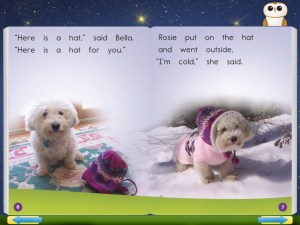
In our 15+ years of experience, we’ve learned which fonts work to help kids learn to read and which ones make it much harder on struggling learners. So the next time you open up another reading app or book, and the font makes it hard for YOU to read, think of how hard it is for a child who is just learning to read.
We use the Guided Reading leveling system (from A through M) to let you know how difficult the book might be for your child. So you don’t waste your time with a book that is too hard, start with the easiest books, stop when your child starts struggling, and move down a level. At-home reading should come easy and feel pleasurable.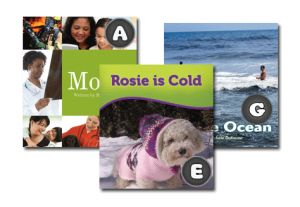
 Before we publish any story, a team of reading experts will dissect it word for word, and make sure that the author didn’t introduce a lot of confusing vocabulary, that sentence structure is sound and consistent, and that repetition of words or phrases happens when appropriate.
Before we publish any story, a team of reading experts will dissect it word for word, and make sure that the author didn’t introduce a lot of confusing vocabulary, that sentence structure is sound and consistent, and that repetition of words or phrases happens when appropriate.
If you would like to try the app out for yourself, download it for free on the App Store. The app comes with 3 free books for you to try out, with the option to purchase more books inside the app. The price of each book is well below the retail price of print books and competitive with Kindle book pricing.
Happy Reading!
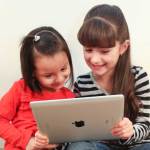
We have joined Pinterest — we know, we know. We should have done that a long time ago.
We know that Pinterest is a common network for teachers and parents to share ideas for helping kids learn to read. We are there to add to that conversation, with boards focused on digital resources you can use in your classroom or at home. Join us! We’d love to see you over there!